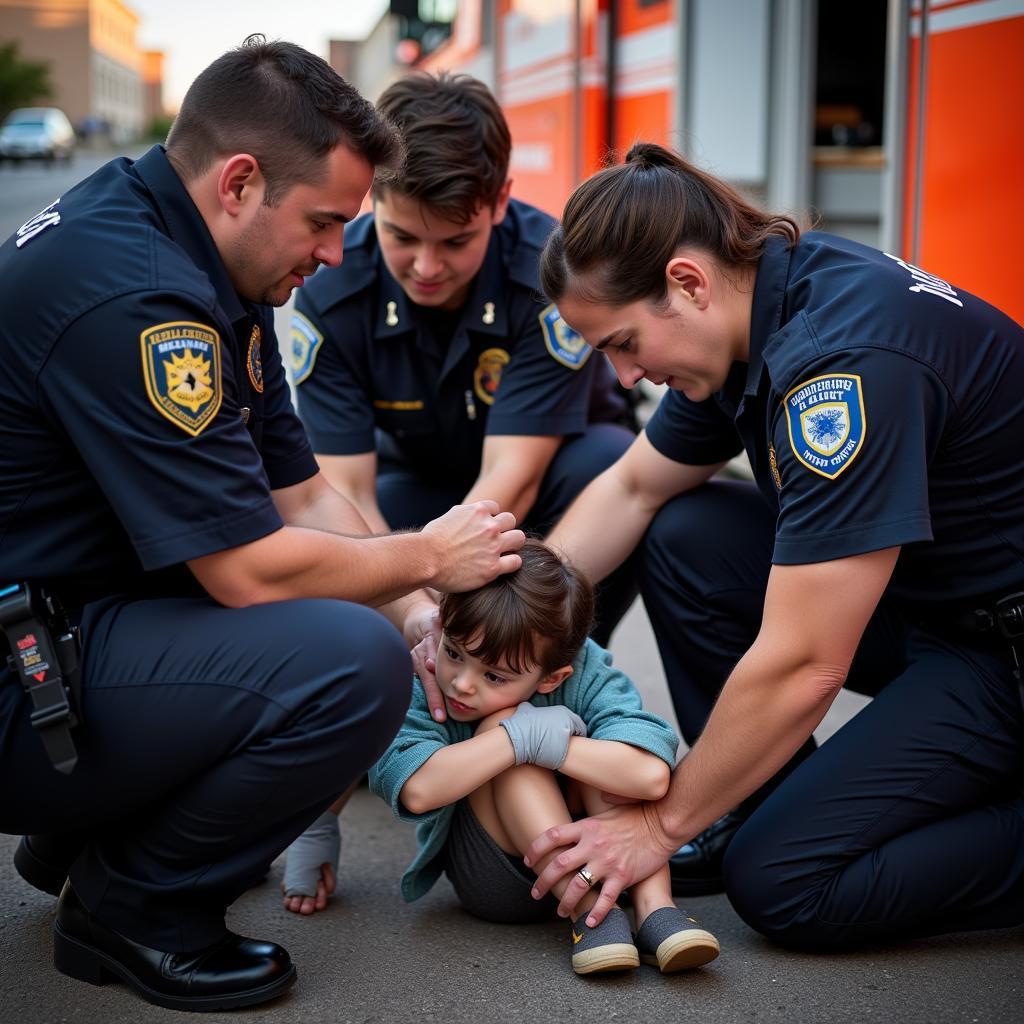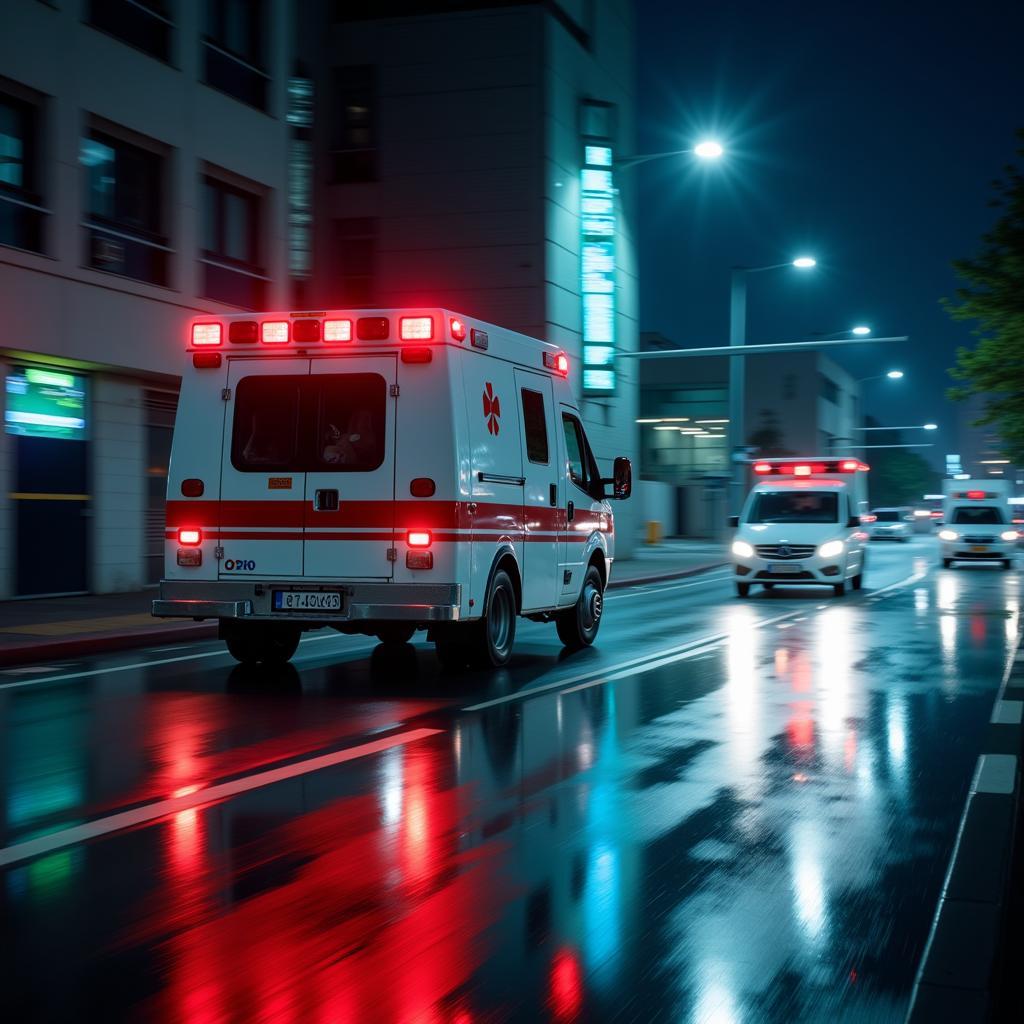When a child faces a medical emergency outside of a hospital setting, every second counts. The “pediatric out-of-hospital chain of survival” is a critical concept that can make all the difference. This system outlines the steps needed to maximize a child’s chances of survival and recovery.
What is the Pediatric Out-of-Hospital Chain of Survival?
This chain is a series of actions, much like links in a chain, that, when performed quickly and effectively, greatly improve outcomes for pediatric patients experiencing cardiac arrest or other life-threatening events outside of a hospital.
 First Responders Providing Pediatric Care
First Responders Providing Pediatric Care
The Six Crucial Steps of the Pediatric Out-of-Hospital Chain of Survival
While the specific protocols might vary slightly depending on the region and available resources, the core principles remain consistent:
-
Prevention: This step emphasizes the importance of proactive measures to reduce the risk of out-of-hospital cardiac events in children. This includes promoting awareness about common childhood injuries, advocating for safe environments (like pool safety and secure storage of medications), and providing education about CPR and basic first aid to parents, caregivers, and the community.
-
Early Recognition and Call for Help: The quicker someone recognizes a child is in distress and seeks help, the better the chances of survival. Parents, caregivers, and bystanders should be trained to identify signs of choking, breathing difficulties, and unresponsiveness. Immediate activation of the emergency medical system (calling 911 or the local emergency number) is paramount.
 Making the Emergency Call
Making the Emergency Call
-
Early CPR: CPR, specifically designed for infants and children, plays a vital role in maintaining blood circulation and oxygen delivery to vital organs until professional help arrives. Knowing the correct techniques for different age groups is crucial. Training courses are widely available and highly encouraged for parents, caregivers, and anyone interacting with children.
-
Early Defibrillation: In cases of cardiac arrest caused by ventricular fibrillation (a life-threatening heart rhythm), early defibrillation can be life-saving. Automated External Defibrillators (AEDs) are portable electronic devices designed to analyze heart rhythm and deliver an electric shock to restore a normal heartbeat. These devices are increasingly available in public places like schools, shopping centers, and community centers. It’s crucial to know how to use an AED and follow the voice prompts during an emergency.
 Learning to Use an AED
Learning to Use an AED
- Effective Advanced Life Support: Once the paramedics or emergency medical services arrive, they provide more advanced medical care, including administering medications, advanced airway management, and other interventions necessary to stabilize the child’s condition. Their rapid response and expert care are vital links in the chain of survival.
 Emergency Medical Transport
Emergency Medical Transport
- Integrated Post-Cardiac Arrest Care: After the initial emergency response, the focus shifts to specialized post-resuscitation care in a hospital. This includes comprehensive medical evaluations, treatments to address the underlying cause of the cardiac event, and ongoing monitoring to ensure the child’s recovery.
The Importance of Knowing the Chain of Survival
Understanding the pediatric out-of-hospital chain of survival is not just for medical professionals; it’s knowledge that empowers everyone to potentially save a child’s life. By being aware of the steps, seeking appropriate training, and advocating for safety measures, communities can create a network of preparedness that significantly improves outcomes in pediatric emergencies.
Remember: Time is critical in a pediatric emergency. By acting quickly and confidently, you can play a vital role in ensuring a child’s best chance of survival.
Need further information or support regarding pediatric emergency preparedness? Please contact us at:
Phone Number: 02437655121
Email: [email protected]
Address: Số 298 Đ. Cầu Diễn, Minh Khai, Bắc Từ Liêm, Hà Nội, Việt Nam.
Our dedicated team is available 24/7 to assist you.